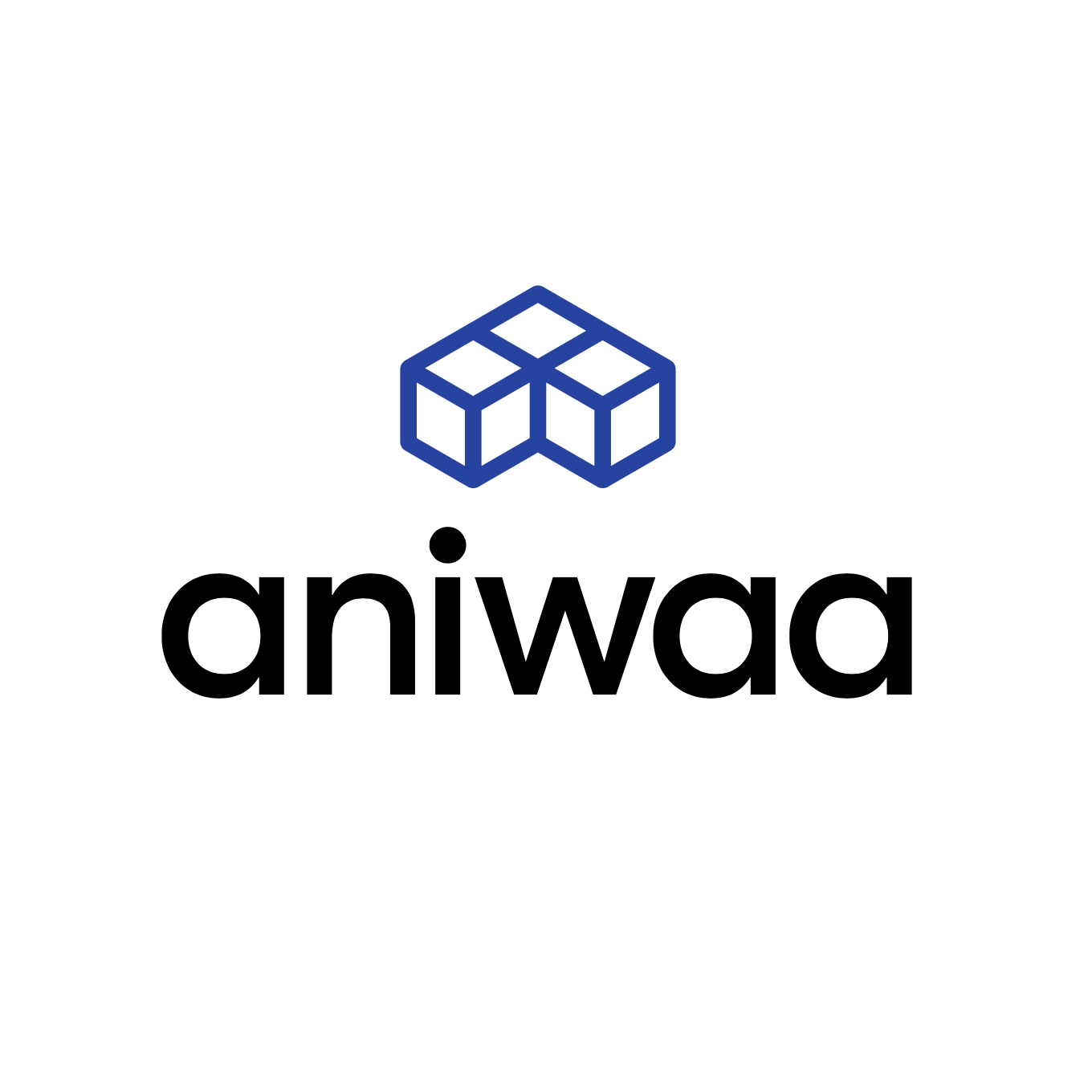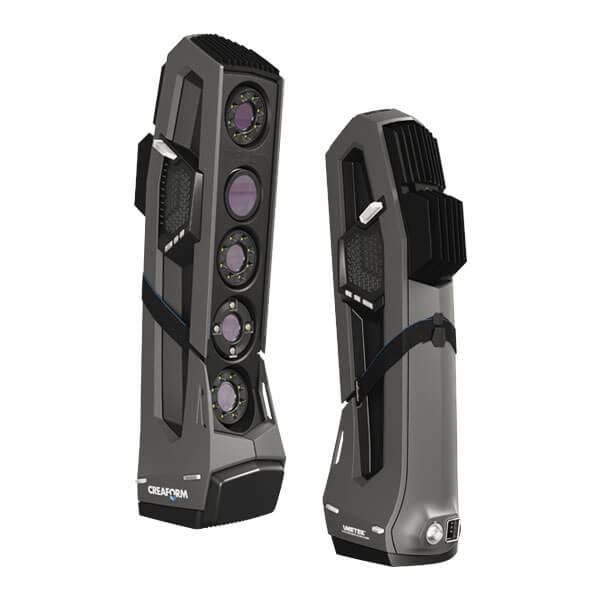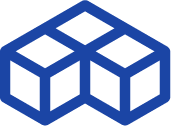Creaform Go!SCAN SPARK review
Introduction
In a global lockdown context, we had the opportunity to virtually test the Creaform Go!SCAN SPARK via videoconferencing tools. It is our sixth official Creaform product review, so we are familiar with the brand and its level of quality.
| Country | Canada |
| Technology | Structured light |
| Weight | 1.25 kg |
| Price | $ 38,000 |
Creaform Go!SCAN SPARK overview
The Go!SCAN SPARK is an handheld 3D scanner produced by Creaform, a manufacturer based in Canada.
The Go!SCAN SPARK Creaform uses the structured light technology.
The Creaform SPARK 3D scanner is the current evolution of the Go!SCAN 20 and Go!SCAN 50. It is interesting to note that the Go!SCAN 20 was designed for small parts with intricate details, (143 x 108 mm scan area and 0.100 mm resolution), while the Go!SCAN 50 was a good match for 3D scanning medium to large-sized objects (recommended part size range of 0.3 – 3.0 m).
With the Go!SCAN SPARK, Creaform managed to significantly improve the Go!SCAN series’ performance and broaden its field of view. The SPARK is recommended for 3D scanning parts ranging from 0.1 m to 4 m, encompassing both of the previous Go!SCAN 20 and 50 versions.
| Accuracy | Volumetric accuracy | Speed | |
| Go!SCAN 20 and 50 | 0.100 mm | 0.300 mm/m | 550,000 points/second |
| Go!SCAN SPARK | 0.050 mm | 0.050 mm + 0.150 mm/m | 1,500,000 points/second |
The Go!SCAN SPARK mainly uses white structured light technology to acquire geometries, with the projection of 99 stripes. Its appearance reveals how it operates; out of the five circular elements stacked on its front, one is the light projector, one is the color camera (up to 200 DPI), and the remaining three are light cameras.
The SPARK’s technical specifications make it the fastest and most user-friendly handheld 3D scanner of the entire Creaform line-up.
 Pros
Pros
- Speed and accuracy
- Powerful and comprehensive software
- Ergonomic and relatively lightweight design
- Versatility (range of part sizes)
- Color acquisition
 Cons
Cons
- Expensive
Packaging
All of the necessary hardware for this demonstration was packed into a rugged flight case.
However, the case leaves no room for the required laptop and mouse, which must be carried in an additional piece of luggage (i.e. backpack).
In any case, the laptop, scanner, and accessories together weigh under 10 kg total and can easily be transported by a single person, even if air travel is required.
Unboxing
As we weren’t physically present, we didn’t get the chance to unpack everything ourselves, but this picture gives a good idea of how the Go!SCAN SPARK and its accessories fit nice and snug inside the case.

Accessories
The Go!SCAN SPARK comes with everything needed to use it, including:
- A cable with two connectors: one for the USB 3.0 connection to the computer, the other for power
- One power cable along with its AC/DC converter
- A calibration plate
- Two sets of targets
- One USB key with a VXElements software suite licence key
PC requirements
In order to run a smooth 3D scanning experience and enjoy VXElements software to its fullest, a high-performance laptop is required. Creaform recommends a certified laptop from HP’s most powerful product lineup, Zbook Mobile Workstation.
Priced at a little over 4500€, the HP Zbook G5 Mobile Workstation features the following specs:
- Display: 17.3’’ LED FHD
- CPU: Intel Core TM i7 8850H
- RAM: 64 GB
- Hard drive: 1 TB SSD
- GPU: NVIDIA Quadro P5200
- OS: Windows 10 Pro x64
During the whole demonstration and testing, the software ran without any lagging, even while simultaneously running the videoconference tools (screen sharing and webcam streaming).
Overview and setup
As stated before, the demonstration happened during what the WHO calls the “great containment”. Thus, we were at home, while a Creaform employee conducted the review from his home office.
To communicate, we shared our computer screens via Zoom and had an additional tool to share the Go!SCAN operator’s webcam view. This allowed us to keep an eye on both the hardware (actual 3D scanning with the scanner) and software perspectives.

Software
The laptop that Creaform used for the demonstration already had VXElements v7.0 installed. It was able to start a new scan in just a few minutes, including a full PC boot.
Creaform’s proprietary VXElements software suite works with all major metrology, CAD, and computer graphic software through mesh and point cloud imports. Here are a few of the most popular suites it is compatible with:
- 3D Systems (Geomagic® Solutions)
- InnovMetric Software (PolyWorks)
- Metrologic Group (Metrolog X4)
- New River Kinematics (Spatial Analyzer)
- Verisurf
- Dassault Systèmes (CATIA V5, SOLIDWORKS)
- PTC (Creo)
- Siemens (NX, Solid Edge)
- Autodesk (Inventor, PowerINSPECT)
Hardware
Setting up the Go!SCAN SPARK is easy and quick. There is one main USB 3.0 cable for data that connects the 3D scanner to the computer. A power cable sprouts from that same USB cable. Hence, there is only one cable between the scanner and the computer, which is very convenient.
To further optimize the user experience, Creaform also included a small plastic part that keeps the cable firmly attached to the computer. Hence, even if an accidental, rough movement is made, the cable won’t get pulled out.
On the 3D scanner end, the USB 3.0 part of the cable is slightly longer than the power cable part, which is locked in place. This adds another safety barrier and keeps the data cable from being disconnected.
The Go!SCAN SPARK looks like a futuristic device and, like the HandySCAN BLACK, it was awarded a RedDot Design Award. It boasts a clean, sleek design made with industrial-grade materials that hint at excellent quality. Even the cooling units on the top and bottom are optimized and designed with aesthetics in mind.
With its parallelepiped shape, the SPARK can be set down vertically or horizontally, which feels “safer”. Each point of contact is covered by a small, soft plastic part that absorbs shocks and prevents unwanted slipping.
The Go!SCAN SPARK boasts several certifications, namely EC Compliance (Electromagnetic Compatibility Directive, Low Voltage Directive), compatible with rechargeable batteries (when applicable), IP50, and WEEE.
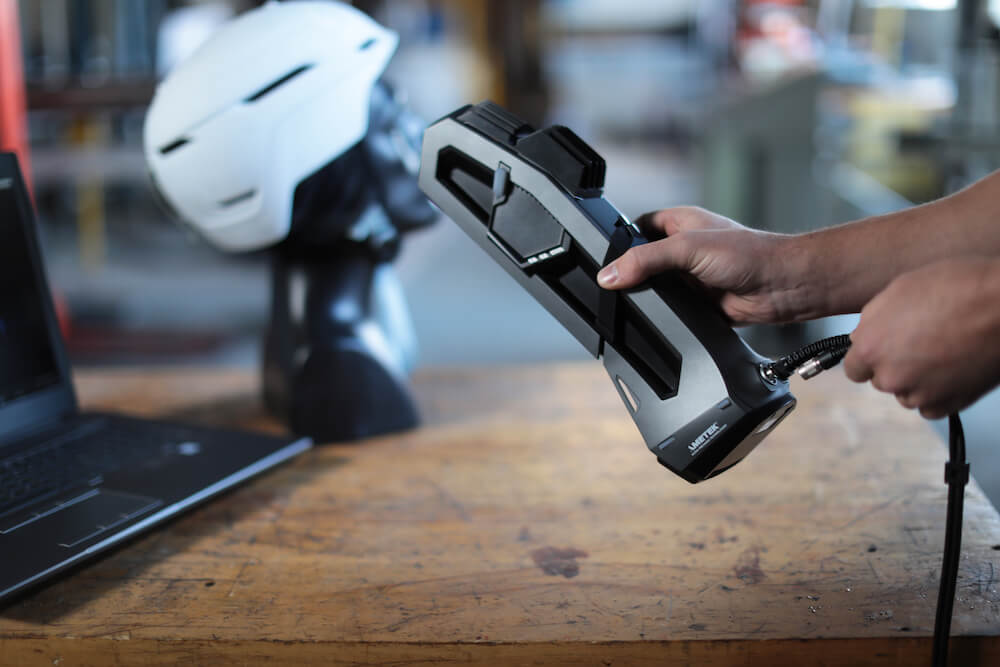
Getting started
We had already tried out the Go!SCAN SPARK a few months ago off the record thanks to one of our partners. Don’t be fooled by its edgy, industrial look– the SPARK feels light and ergonomic once in hand. It is quite lightweight for a handheld 3D scanner, weighing in at only 1.25 kg, and is relatively small with dimensions of 89 x 114 x 346 mm.
This 3D scanner is easy to manipulate single-handedly and it’s not tiring to move it around, even with complex movements. It is truly light and portable, and its mirrored design suits both right and left-handed users. The Go!SCAN SPARK is also equipped with a wrist strap, though it’s mostly just there for peace of mind; Olivier didn’t use it while he demoed the scanner.
The calibration process is very intuitive, and a step-by-step video is directly displayed via the software, which precisely explains how and where to hold the Go!SCAN SPARK. This process consists in 3D scanning the calibration plate at different distances and at different angles. There are LEDs embedded within a soft transparent plastic on each side of the 3D scanner, serving as visual cues that are of precious help.
The software then performs the almost instant calibration procedure and signals that it is ready to 3D scan. This process also includes the color calibration of the device.
Experience
Software
The VXElements software suite offers an end-to-end experience, from the first, basic steps of digitization to powerful and comprehensive reverse engineering capabilities. VXElements comes standard with the Go!SCAN SPARK, but to obtain the functionalities required for reverse engineering, it is recommended to get the VXModel software add-on.
VXModel is entirely dedicated to reverse engineering applications and is compatible with the best CAD tools. During the demo, we did not try VXModel, but we previously performed a full reverse engineering use case with it when reviewing the HandySCAN BLACK Elite.
Anyways, we appreciated the ability to directly obtain a clean and visible mesh in VXElements, as well as the possibility to fine-tune its resolution afterwards with a lot of different options (resolution, accuracy, hole filling, and much more). It is also possible to keep or discard the color information generated during the 3D scan. This allows for a very efficient workflow and saves a lot of time and space.
For 3D body scanning, the Go!SCAN SPARK offers a specific mode called “semi rigid object” in the software. With this mode, VXElements acknowledges the fact that the person can be slightly deformed (moved) during 3D scanning, and will optimize data processing accordingly. Holding your breath during a 3D body scan is no longer crucial, and it is a lot more comfortable for the operator who has more time to scan and of course for the person being scanned.
To conclude, we must say that the experience of operating the SPARK with its software was great. Every option is clearly explained and straightforward to use. Advanced functionalities are available but not necessarily essential for each application and use case.
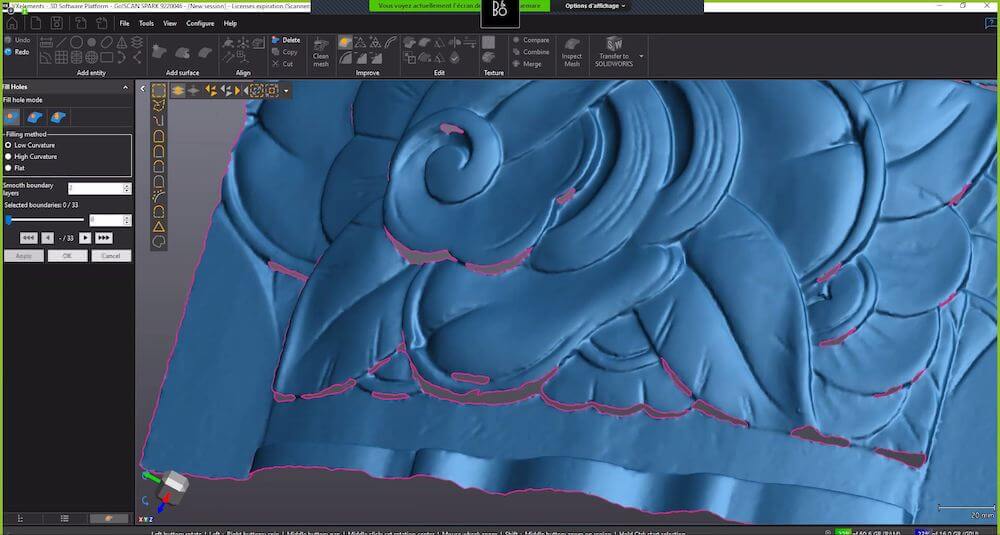
3D scanning
Like all structured light 3D scanners, the Go!SCAN SPARK does not operate under direct sunlight and works best indoors. Aside from these recommendations, no special lighting conditions are required, and once the 3D scanner is connected and powered up with the software running, it is possible to start 3D scanning right away.
The SPARK relies on a hybrid positioning technology that combines three 3D scanning methods: based on texture, based on geometry, and/or with markers/targets. The targets are small black and white stickers which help the scanner identify the underlying surfaces below them. This mode offers the ability to 3D scan even in very difficult conditions (lightning, color of objects, transparency) but at the cost of a longer setup process.
By default, targets and geometry are used. It is possible to configure different combinations and to acquire the object’s texture (colors).
Again, the device is lightweight, and its interface and ergonomics are very well thought out; it is possible to perform almost all the required manipulations directly from the scanner itself and without having to juggle between the scanner and the computer.
The LED indicators are also enjoyable, changing colors to indicate if the distance between the scanner and the object is optimal or not. They will turn red if you are too close, green when in the right range, and blue when you’re starting to get too far away from the subject.
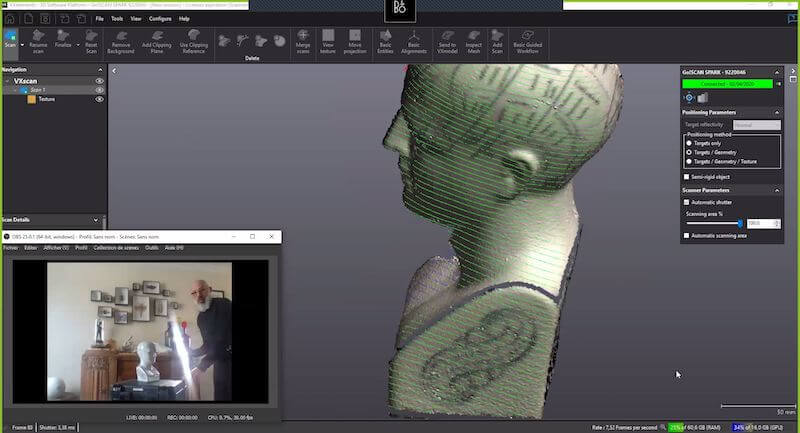
Meshes and 3D models
Usually, 3D scanners produce a dot cloud that is then simplified and transformed into a mesh, which is essentially made up of triangles joined by their points and edges. The dots are indeed small, three-dimensional coordinates.
The source dot cloud is of great importance, because each point is only acquired once, and the triangles are created according to the number and resolution of those points.
Creaform’s technology increases the number of samples taken for each tridimensional point (voxel), so each time a single point on the surface is acquired, the position of the voxel is recalculated, increasing the scan’s accuracy. There are no oversampling issues associated with this technique, and one of its major advantages is the ability to directly generate a surface from raw capture data. The 3D scanning artefacts (unwanted extra data) are also kept to a minimum with this technology.
There is no more waste of time in the process, bypassing a long period of waiting for the computer to compute the mesh because it is directly generated on the go during the 3D scanning process. For someone used to typical 3D scanning processes, the Go!SCAN SPARK’s ability to generate meshes in real time is truly astonishing.
3D scan results
For this rating, we compared the performance of the product to similar 3D scanners we had previously tested. Since it was a demonstration and not a directly hands-on review due to the Covid situation, we focused on the following aspects:
- 3D scanning speed: How long does it take to 3D scan the subject from start to finish ?
- Resulting scan quality: What is the resolution and accuracy of the 3D scan? Is it impacted by the type of 3D scanned subject ?
1. Sample part
This part is a 3D scanning “classic”. It is quite easy to 3D scan as it does not exhibit complex geometries, and its plastic material and grey color make it an easy pick to demonstrate a 3D scanner’s capabilities. Furthermore, the part was fitted with markers, which helps the 3D scanning process a great deal as the captured data is easier to align.
We had already 3D scanned this part with other Creaform 3D scanners: the Go!SCAN 20, the HandySCAN 700 (previously best-in-class red light laser 3D scanner) and the HandySCAN BLACK Elite (latest best-in-class blue light laser 3D scanner).
The Go!SCAN SPARK did a really good job. In less than 2 minutes, the top surface of the part was 3D scanned. When taking a deeper look at the final result, we realized that it was on par with a HandySCAN 700’s performance.

2. Phrenology statue
The head statue/model that we scanned measures about 150 x 150 x 200 mm. It’s made of slightly glossy ceramics, with very small, fine, black lettering.
The entire 3D scanning process took less than 5 minutes to complete. Off the bat, the direct result in the software was of good quality.
After a few minutes of tweaking, we obtained an even better mesh with amazing color resolution. We didn’t spend much time calibrating the color range, so the 3D scan colors appeared to be a bit bland, but compared to other 3D scanners it was nevertheless impressive. The small fonts were readable, and even the small ceramic cracks were properly acquired.

3. Carved, wooden furniture
The 3D scanned area was approximately 50 cm in length and 25 cm high, and the carvings were about 2 cm deep.
It was an interesting 3D scanning process because the furniture couldn’t (easily) be moved, so the demonstrator had to tilt the Go!SCAN SPARK around in various positions and angles to properly capture the geometry. The part also had a lot of intricate details, which are usually challenging to 3D scan.
The 3D scanning process took less than 3 minutes to complete.
Creaform’s demonstrator showed us that the scanner is able to resume a scan if interrupted, with cleverly-indicated 3D visual clues in the software’s interface in order to retrieve the perfect position to unpause the process.
The operator also demonstrated that it is possible to perform a first, instantaneous mesh creation at low resolution, followed by a second one with the same data but at a higher resolution, with a lot of advanced functionalities, including hole filling which worked very well. Even the most detailed post-processing step took under a few minutes.

Value: Aniwaa’s opinion
The Go!SCAN SPARK is a great product and a true game-changer for users looking for a powerful, multi-use 3D scanner. It is one of the best structured light 3D scanners on the market and its performance can only be surpassed by advanced laser-based 3D scanners, which do not offer the same simplicity and flexibility, as they usually require markers. The ability to capture colors is also a great advantage and can make the Go!SCAN SPARK a great fit for museums, architecture firms, and design agencies.
Furthermore, its ease of use and acquisition speed also make the Creaform SPARK a great fit for all applications related to product development, such as reverse engineering, redesign, and even metrology depending on accuracy requirements and tolerances. Being able to 3D scan a full, white automotive body in a matter of minutes is indeed an interesting feat.
The VXElements software suite is on par with the hardware. It is well optimized and runs smoothly, offering a lot of functionalities all while managing to be relatively intuitive.
As it is usually the case with Creaform products, the Go!SCAN SPARK delivers an excellent performance. It is, at time of writing, the best handheld structured light 3D scanner we’ve ever tested and– possibly– on the market.
It is a relatively user-friendly tool suited for most operators who already have experience with 3D, and no particular expertise in metrology is required to take full advantage of its capacities.
However, its high price tag makes it only available to a fraction of the market, while less wealthy organisations will have to settle for a less powerful product.
Creaform SPARK review: conclusion
The Go!SCAN SPARK is an excellent 3D scanner. Creaform managed to deliver a structured light 3D scanner that reaches almost the same performance as their previous best-in-class laser scanner, the HandySCAN 700, while offering color acquisition capabilities and a scanning speed of 1,500,000 measurements/second.
On paper, the Go!SCAN SPARK has almost no competitors. An even better performance would imply a heftier price tag, and going for a cheaper alternative implies a significant drop in terms of performance and power.
Its comprehensive and modular software suite makes it the best choice if you are not limited by budget. To our best knowledge, similar high-performance, handheld structured light 3D scanners do not exist.
If you are on a budget, the peel3d family (Peel 1 and Peel 2) can be interesting to look into.
 English
English  Français
Français